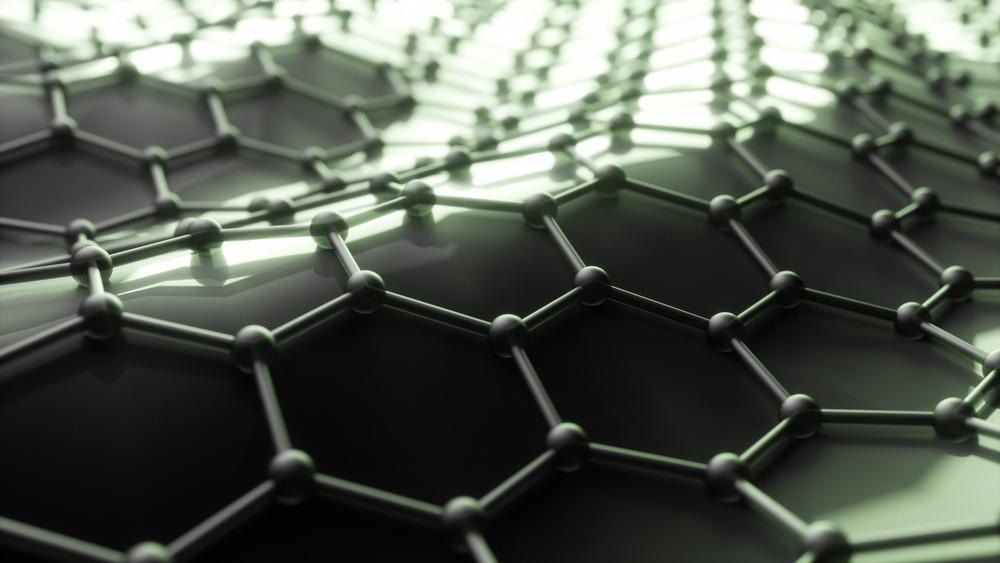A paper available in the journal Materials Today: Proceedings demonstrates the feasibility of using a novel metastable carbon nanotubes (CNTs)/vanadium oxide (VO2) nanocomposite as a supercapacitor electrode material.

Study: Novel vanadium oxide/carbon nanotube composite and its charge storage properties. Image Credit: OliveTree/Shutterstock.com
Importance of Pseudo-capacitance
Pseudo-capacitance is one of the storage mechanisms in electrochemical capacitors. In this storage mechanism, the reversible electron transfer reaction that occurs in the redox-active material is restricted on the electrode surface, which promotes active interaction between the electrons and leads to the formation of an array of energy states.
Limitations of Existing Pseudocapacitors
Although transition metal oxides, such as iridium dioxide, possess exceptional pseudo-capacitance, they are considerably expensive, which necessitated the identification of more affordable alternatives.
Additionally, the power density of pseudocapacitors (PCs) is notably lower than electrochemical double-layer capacitors (EDLCs) owing to the slow faradic redox reaction of the PC electrode material, which has shifted the focus on composite supercapacitors.
Composite supercapacitors are composed of both PC materials and EDLCs with synergistic characteristics and have been investigated extensively to develop supercapacitors with increased power density.
Significance of Composite Supercapacitors
Carbon-based materials, such as graphene, active carbon, and CNTs, with large specific surface area and electrical conductivity, act as the backbone of composite supercapacitors. Conducting polymers or metal oxides can be deposited on carbon materials at a marginal fraction to preserve the main phase of the porous structure. Thus, the combination of carbon and PC materials can create a composite supercapacitor with evidently enhanced power density.
Vanadium (V)-based oxides were used in several studies involving electrochemical capacitors. Among them, VO2 has gained more attention as it displayed better performance compared to other V oxides, such as vanadium pentoxide, owing to the rise in electronic conductivity in VO2 in the presence of mixed-valence states V(V) and V(IV).
Additionally, VO2 displayed exceptional electrochemical performance when coupled with a template, which demonstrated the feasibility of using VO2 as electrode material in an aqueous supercapacitor. Recently, CNTs were also utilized as templating substrates for VO2 deposition through a sol-gel method followed by the freeze-drying process to obtain a VO2/CNTs nanocomposite with pores.
Synthesis and Evaluation of VO2/CNTs Nanocomposites
In this study, researchers synthesized metastable VO2/CNTs nanocomposites by depositing VO2 on CNTs in the aqueous sodium metavanadate (NaVO3) solution through a simple redox method at room temperature. Metastable VO2 obtained through the reduction of V species in the NaVO3 solution by CNTs was concurrently deposited on the CNTs.
Initially, CNTs were mixed with sulfuric acid and nitric acid for 15 minutes at 120 degrees Celsius and then cooled down to 20 degrees Celsius. Subsequently, the cooled mixture was washed with deionized water and acetone and dried at 60 degrees Celsius. Eventually, a mortar and pestle were used to ground the dried acid-treated CNTs into powder.
VO2/CNTs nanocomposites with 80, 70, 60, 50, 40, 30, and 20 weight percent of VO2 were synthesized by adding different weights of acid-treated CNTs to the NaVO3 stock solution. Sulfuric acid was used to adjust the pH of the NaVO3 stock solution to 1.68.
The mixture of NaVO3 solution and CNTs was stirred continuously at ambient temperature and 200 rotations per minute for a week. Eventually, nanocomposites with different VO2 loadings were obtained in the form of a solid black precipitate. The nanocomposites were then filtered and cleaned with ethanol and deionized water to eliminate dissolvable by-products and dried at 60 degrees Celsius.
X-Ray diffraction method, scanning electron microscopy (SEM), and high-resolution transmission electron microscopy (HR-TEM) were used to characterize the nanocomposites in terms of crystallinity, surface morphology, and microstructure, respectively. Thermogravimetric analyses were performed to determine the VO2 weight percent in the synthesized nanocomposites.
Fabrication of Nanocomposite Thin Film on Graphite Electrode for Electrochemical Studies
The synthesized VO2/CNTs nanocomposites with different VO2 loading were cast-evaporated on a graphite disc electrode to obtain thin nanocomposite films. After casting, a desiccator was used to dry the electrodes before the electrochemical studies. In the electrochemical study, a one-compartment three-electrode cell was established with a graphite counter electrode and silver/silver chloride as the reference electrode. Researchers performed the galvanostatic charge-discharge study and cyclic voltammetry to evaluate the electrochemical performance of the synthesized samples.
Significance of the Study
Seven VO2/CNT nanocomposites with different VO2 loadings were synthesized successfully. VO2 was coated uniformly around the CNTs. The presence of VO2 in the synthesized nanocomposite was confirmed in the XRD analysis. The TGA analyses confirmed different VO2 loadings in the nanocomposites and displayed the hydrous form of VO2.
The VO2/CNTs nanocomposite displayed a reversible conversion in the negative potential region between -0.8 volts and -0.1 volts and a rectangular shape of the cyclic voltammograms, which indicated the pseudo-capacitance of the nanocomposite.
The synergistic effect of VO2 and CNTs was observed at the nanocomposite with 60 weight percent of VO2. This nanocomposite demonstrated the highest mass-specific capacitance of 172.30 farad per gram due to the nanocrystalline nature and high surface area of the VO2 deposited on CNTs. The nanocomposite also displayed the highest specific capacitance of 307.82 farads per gram in the galvanostatic charge-discharge study at 0.4 amperes per gram normalized current.
The VO2/CNTs nanocomposite demonstrated an increase in specific capacitance of 0.19 farad per gram compared to the initial capacitance after charging-discharging over 1000 cycles at 20 millivolts per second scan rate, which confirmed the exceptional cycling stability of the nanocomposite.
Taken together, the findings of this study demonstrated that the 60-weight percent VO2/CNTs nanocomposite could be effectively utilized for the application of supercapacitor.
Reference
Pang, C. H., Lim, S. S., Ng, K. C. (2022) Novel vanadium oxide/carbon nanotube composite and its charge storage properties. Materials Today: Proceedings https://doi.org/10.1016/j.matpr.2022.04.921
Disclaimer: The views expressed here are those of the author expressed in their private capacity and do not necessarily represent the views of AZoM.com Limited T/A AZoNetwork the owner and operator of this website. This disclaimer forms part of the Terms and conditions of use of this website.